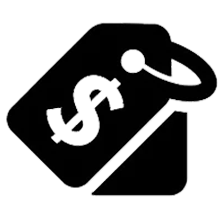Bauer Nexus 2N Senior Hockey Stick
- 0 left in stock
Free Shipping $100+

Fast Easy Returns

Best Price Promise

Ships Canada Only
The Bauer Nexus 2N Senior Hockey Stick is designed to be a very durable stick that can be used at an elite level without compromising weight and performance. The Bauer 2N stick is built to perform in any situation with a mid-kick flex profile and Sweet-Spot Technology that will not disappoint, no matter the shot type. The Nexus 2N Hockey Stick will be 4" taller than standard sticks (except in the new 70 Flex ? 60?), making it a ideal option for a taller player.
Bauer will use Control Shaft Geometry on the 2N providing a different shaft feel with rounder corners, this works with a new easy-load taper technology further down the shaft to amply the sweet spot of the stick and improve power, speed, and consistency.
Moving down to the blade, the Nexus 2N will use Bauer's new R-LITE system combined with a 12k carbon wrap. Bauer will also be including there Max Balance Construction that gives the stick a great balance between shaft and blade weight. When you match this with the 2N's Pure Shot blade profile, you'll get amazing performance no matter the shot type. These features will create an elite level feel that will hold up a lot better over time.
Even with all these upgrades the Bauer 2N Composite Stick still comes in at 15 grams lighter than the previous model. With it all wrapped up in a new sleek graphic featuring the Nexus blue we've come accustomed to.
The Bauer Nexus 2N Senior Hockey Stick is designed to be a very durable stick that can be used at an elite level without compromising weight and performance. The Bauer 2N stick is built to perform in any situation with a mid-kick flex profile and Sweet-Spot Technology that will not disappoint, no matter the shot type. The Nexus 2N Hockey Stick will be 4" taller than standard sticks (except in the new 70 Flex ? 60?), making it a ideal option for a taller player.
Bauer will use Control Shaft Geometry on the 2N providing a different shaft feel with rounder corners, this works with a new easy-load taper technology further down the shaft to amply the sweet spot of the stick and improve power, speed, and consistency.
Moving down to the blade, the Nexus 2N will use Bauer's new R-LITE system combined with a 12k carbon wrap. Bauer will also be including there Max Balance Construction that gives the stick a great balance between shaft and blade weight. When you match this with the 2N's Pure Shot blade profile, you'll get amazing performance no matter the shot type. These features will create an elite level feel that will hold up a lot better over time.
Even with all these upgrades the Bauer 2N Composite Stick still comes in at 15 grams lighter than the previous model. With it all wrapped up in a new sleek graphic featuring the Nexus blue we've come accustomed to.

Hockey Player Stick Sizing & Information Guide
Selecting the right stick for you.
When it comes to sizing a Hockey Stick, the length tends to be a preference. Sticks come in Senior, Intermediate, Junior and Youth lengths with corresponding flex options. You will need to consider your weight and height or the person you are buying for in order to choose the correct size. Intermediate, Junior, and Youth hockey sticks will have smaller shaft dimensions, making them easier for young players to hold and control.
A stick can always be cut down in length, and will usually be cut down for kids. However, selecting a hockey stock too long in length or the wrong flex can hinder performance. For kids, junior, intermediate and senior all come in roughly standards length. In some cases, each Junior flex will be a different length of stick. Look at each and compare the height of the player you are buying for.
Flex can be tricky to pick as every hockey player is different and has their own preference. You can think of flex numbers as pounds of force. Having too stiff or too whippy a stick can hinder performance in their own ways.
Personalizing your stick length.
As mentioned before, length is very much personal preference. To determine a benchmark height, stand with your shoes off and the stick against your body with the toe on the ground. As a general rule of thumb we recommend sticks to come up to between your mouth and nose. For kids, or players who are still growing, the maximum height we recommend is eye level.
Mark the shaft of the stick where the height is desired and cut it down to length. Make sure to re-insert the plug from the top to prevent an open composite end at the top of your stick.
When cutting a stick down, keep in mind that the shorter you cut a stick, the stiffer it becomes. As a general rule, a stick increases 3% in stiffness for every inch cut off. If you are unsure how much you want to cut off, take the least amount first so that you can always cut more if necessary. Cutting the stick multiple times will not affect the sticks construction.
Information to Consider
Flex Options
Players want to be able to fully flex the stick. If a stick is too soft, the resulting shot will be inaccurate and weak. If a stick is too stiff, there will be no power behind the shot. Think of the flex number as pounds of force. This is the number of pounds that need to be put into the stick to fully flex it.
Curve Options
In most cases, sticks are offered in multiple blade curve pattern options. Please refer to our blade pattern charts for more information regarding the patterns available.
Kick Point Options
A Mid-kick stick will have a stiffer taper so that it flexes more in the middle of the shaft. These sticks have a longer loading time but offer a more powerful shot, perfect for players taking a lot of slap shots.
A Low-kick stick will have a stiffer middle of the shaft and softer taper so that it flexes at the bottom of the shaft closer to the blade. These sticks will have a much quicker release perfect for quick snap shots and writs shots.




















